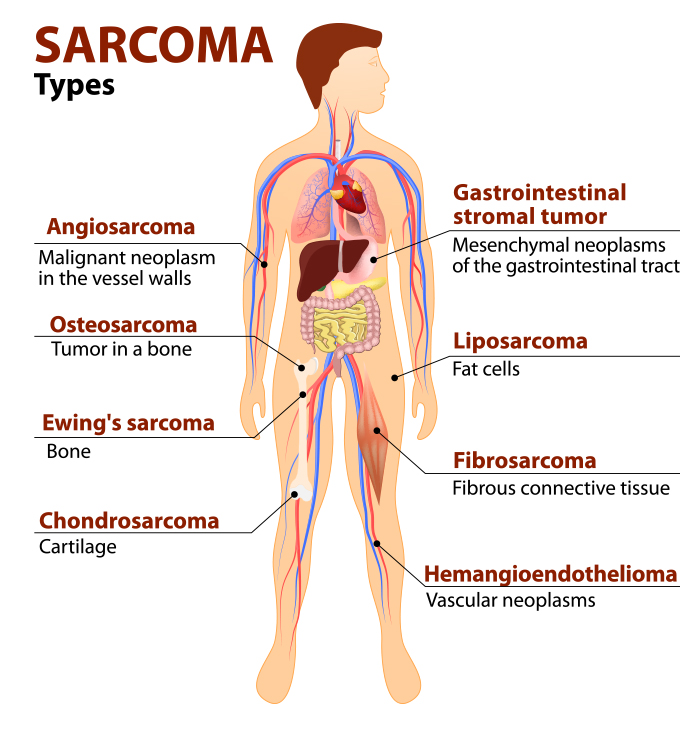Soft Tissue Sarcoma and Radiation Therapy
Soft tissue sarcomas are a group of cancers that come from the fat, muscles, blood vessels or nerves of your body. Sarcomas form when normal cells in these tissues change and become cancerous. Sarcomas that start in the bone are different from soft tissue sarcomas and are not reviewed here. Unlike some other cancers, the cause of most sarcomas is unknown. Exposure to cigarette smoke, alcohol and diet have not been associated with any sarcomas.
Many sarcomas are first noticed by patients as a “lump” or “bump” (called a tumor). While most tumors are not cancers, it is important to have them looked at early by a doctor. If a tumor or an area of concern is large, quickly growing or painful, it may be a sarcoma.
According to the American Cancer Society, there will be 13,400 new cases of sarcoma in 2023. Sarcomas are very rare, making up less than 1% of new cancers. Adults and children can develop a sarcoma, but it is most common in adults.
Sarcomas can form anywhere in the body. The most common locations for sarcomas to form are in the arms or legs, but they can also form in the abdomen, chest or head and neck. Some more rare types of sarcoma can even form in the skin.
There are over 100 different types of soft tissue sarcoma. However, a few types make up most cases:

- Gastrointestinal Stromal Tumor (GIST) – a cancer that happens in the digestive tract.
- Liposarcoma – a cancer that starts in fat cells, usually in the arms, legs or abdomen
- Leiomyosarcoma – a cancer that is from muscle cells, usually in the arms, legs or abdomen.
- Synovial sarcoma – a cancer that looks like cells of the tissues of the joints, such as the elbows or knees. This type most commonly develops in young adults.
- Angiosarcoma – a cancer that forms from blood vessel cells. These can form anywhere in the body. Very rarely, these can form in the breast many years after prior radiation therapy.
- Malignant peripheral nerve sheath tumors (MPNST) – a cancer that forms from nerve cells. About half of cases of MPNST occur in patients with the disease neurofibromatosis type 1, which is inherited condition.
- Undifferentiated/unclassified sarcoma – a sarcoma that cannot be classified as some other type. These are common and, they used to be called “malignant fibrous histiocytoma,” but that term is no longer used.
- Desmoid tumors – while they are not technically sarcomas, desmoid tumors are soft tissue tumors that are often treated by the same doctors that treat sarcomas.
A doctor who diagnoses disease by reviewing material under a microscope (pathologist) reviews your sarcoma tumor material. They will determine the type of sarcoma and give it a score called the “tumor grade.” This score ranges from 1-3 and can be related to the behavior of the sarcoma. Grade 1 sarcomas tend to be slower growing and grade 3 sarcomas tend to grow fast and act most aggressive.
SEARCH RTANSWERS

WHAT TO EXPECT
Once a cancer diagnosis is made, you will likely talk with your primary care physician along with several cancer specialists to discuss what happens before, during and after treatment.
CLINICAL TRIALS

SIDE EFFECTS

SIDE EFFECTS
TREATMENT TEAM








